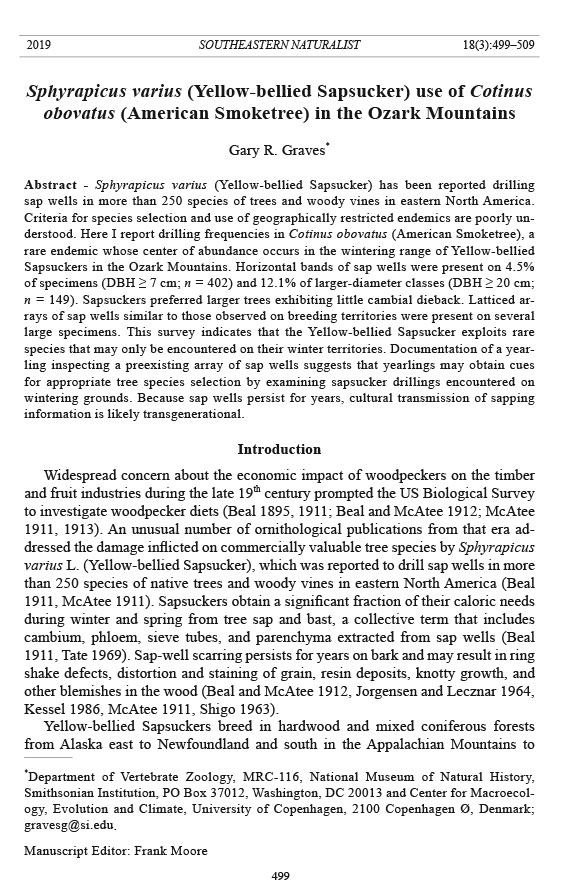Sphyrapicus varius (Yellow-bellied Sapsucker) use of Cotinus
obovatus (American Smoketree) in the Ozark Mountains
Gary R. Graves
Southeastern Naturalist, Volume 18, Issue 3 (2019): 499–509
Full-text pdf (Accessible only to subscribers.To subscribe click here.)

Access Journal Content
Open access browsing of table of contents and abstract pages. Full text pdfs available for download for subscribers.
Issue-in-Progress: Vol. 25( 1) ... early view
Check out SENA's latest Monograph and current Special Issue in progress:













 The Southeastern Naturalist is a peer-reviewed journal that covers all aspects of natural history within the southeastern United States. We welcome research articles, summary review papers, and observational notes.
The Southeastern Naturalist is a peer-reviewed journal that covers all aspects of natural history within the southeastern United States. We welcome research articles, summary review papers, and observational notes.